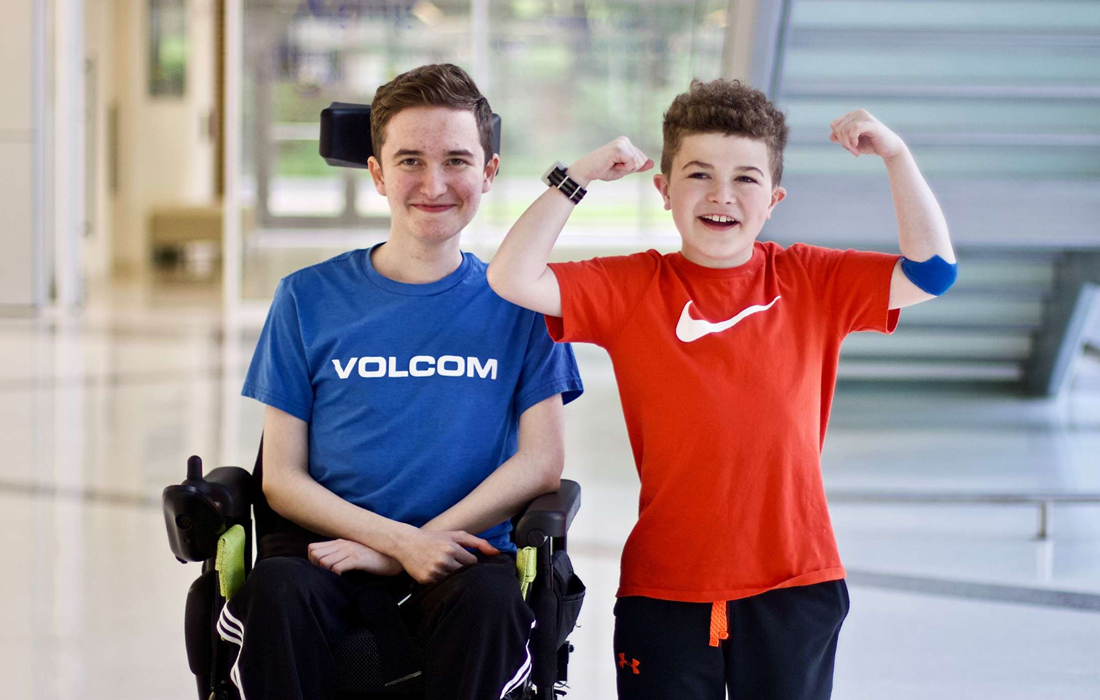Stem Cell Therapy for Specific Conditions
Stem Cell Therapy for Muscular Dystrophies
What are Muscular Dystrophies?
Muscular dystrophy is a group of diseases that cause progressive weakness and loss of muscle mass. In muscular dystrophy, abnormal genes (mutations) interfere with the production of proteins needed to form healthy muscle.
There are many kinds of muscular dystrophy. Symptoms of the most common variety begin in childhood, mostly in boys. Other types don’t surface until adulthood.
There’s no cure for muscular dystrophy. But medications and therapy can help manage symptoms and slow the course of the disease.
Types of Muscular Dystrophies
Different forms of dystrophy differ in terms of age of onset, the severity of symptomatic progression, and distribution of affected muscles. Depending on the molecular etiology, muscular dystrophies can present clinically relevant defects beyond the skeletal muscle compartment. In particular, cardiac involvement is present in several forms of dystrophy.
Duchenne Muscular Dystrophy
With an incidence of approximately 1 in 5000 male newborns, Duchenne muscular dystrophy (DMS) is the most frequent and one of the most severe forms of muscular dystrophy. DMS patients typically present with progressive weakness of limb muscles, trunk muscles, and the diaphragm, leading to wasting, kyphoscoliosis, and severe respiratory problems. Most patients die in their third decade of life due to respiratory complications.
Almost all DMD patients have cardiac involvement, and heart failure is the second leading cause of death. Boys with DMD usually lose the ability to walk and feed themselves in their teenage years. They die from respiratory insufficiency or cardiomyopathy in early adulthood.
Becker Muscular Dystrophy
Another muscular dystrophy, Becker muscular dystrophy (BMD), is rarer, with a prevalence of 1 in 20,000 male births has the same causative allele as DMD. The onset of symptoms occurs later than DMD, and the average age of death is in the fifth decade of life.
What Causes Muscular Dystrophies?
Certain genes are involved in making proteins that protect muscle fibers. Muscular dystrophy occurs when one of these genes is defective.
Each form of muscular dystrophy is caused by a genetic mutation particular to that type of the disease. Most of these mutations are inherited.
Muscular dystrophy occurs in both sexes and in all ages and races. However, the most common variety, Duchenne, usually occurs in young boys. People with a family history of muscular dystrophy are at higher risk of developing the disease or passing it on to their children.
In the case of duchenne it is caused by mutations in the DMD gene (encoding dystrophin) that abolish the production of dystrophin in muscle. In the cause of Becker muscular dystrophy the DMD gene is also affected but is partially functional.
Current Treatment Options
Although there’s no cure for any form of muscular dystrophy, treatment for some forms of the disease can help extend the time a person with the disease can remain mobile and help with heart and lung muscle strength.
Patients with these conditions should be monitored throughout their lives. With a team consisting of a neurologist, physical medicine and rehabilitation specialist and physical and occupational therapists.
Treatment options include medications, physical therapy and surgical procedures. Ongoing assessments of walking, swallowing and breathing and hand function enable the treatment team to adjust treatments as the disease progresses.
Some commonly used medications include:
- Corticosteroids. They can help muscle strength and delay progression of the disease. But prolonged use can cause weight gain and weakened bones, increasing risk of fractures.
- Eteplirsen (Exondys 51). This is the first medication approved by the FDA to treat some people with DMD.
- Heart medications. Some medications such as angiotensin-converting enzyme (ACE) inhibitors and beta-blockers are used to treat and prevent heart damage.
Use of Mesenchymal Stem Cells
Over the last two decades, different stromal cell types to exhibit peculiar paracrine/secretory functions have been researched as potential treatments for muscular dystrophies. These mesenchymal stem cells are under evaluation as potential cellular therapies for different pathological conditions.
Nevertheless, studies using both intramuscular and systemic delivery in different dystrophic mouse models have examined the potential therapeutic efficacy of MSCs of different tissue origins.
Many studies demonstrate the ability of MSCs to engraft in skeletal muscle, and some have also suggested the potential of transplanted MSCs to give rise to muscle stem cells.
Scientists have studied the effects of intravenous administration of human umbilical cord-derived MSCs (UC-MSCs) in a pediatric patient and two adults with BMD. Although histology of muscle biopsies did not reveal any improvement, the clinical examination reported gait improvement in the pediatric patient. In a subsequent study, nine DMD patients received a combination of intramuscular and systemic administration of allogeneic UC-MSCs. They found an improved pulmonary function and diaphragmatic activity in all patients and observed a reduction in creatine kinase (enzyme released with muscle breakdown) levels.
There are multiple ongoing studies evaluating the use of cellular therapies for muscular dystrophies due to their incredible potential and lack of severe adverse reactions. These therapies could become a light in the search for a better quality of life for an incurable and fatal disease.
Sources:
Sun C, Serra C, Lee G, Wagner KR. Stem cell-based therapies for Duchenne muscular dystrophy. Exp Neurol. 2020 Jan;323:113086. doi: 10.1016/j.expneurol.2019.113086. Epub 2019 Oct 19. PMID: 31639376; PMCID: PMC6899334.
Biressi S, Filareto A, Rando TA. Stem cell therapy for muscular dystrophies. J Clin Invest. 2020 Nov 2;130(11):5652-5664. doi: 10.1172/JCI142031. PMID: 32946430; PMCID: PMC7598050.
https://www.mayoclinic.org/diseases-conditions/muscular-dystrophy/symptoms-causes/syc-20375388
Image from:

